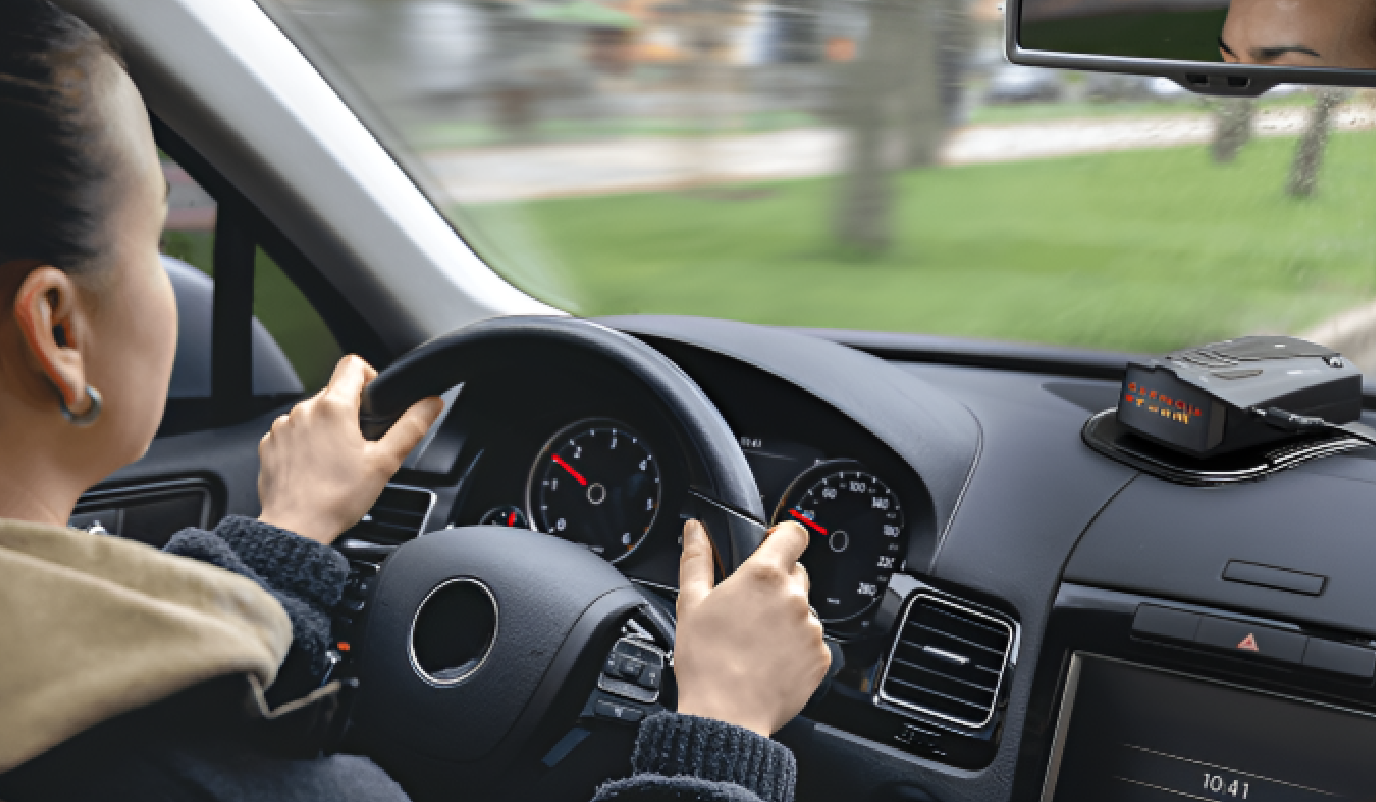
In recent months, the tech world has been captivated by the emergence of Radar Shield Pro, a groundbreaking radar detection system that has rapidly gained attention across social media platforms and technology communities. This comprehensive analysis examines the product's technical specifications, real-world performance, market positioning, and unexpected capabilities that have contributed to its viral status, all through the lens of expert evaluation.
✅ Official Website: – Click Here Shop Now Special Offer
The Buzz: Why Is Everyone Talking?
The Radar Shield Pro has ignited a firestorm of attention across social media platforms, particularly on TikTok where short-form videos demonstrating its capabilities have garnered millions of views and sparked countless reaction videos. Tech influencers have amplified this buzz, with prominent figures like TechReviewPro and RadarTech posting unboxing and testing videos that routinely exceed their average engagement rates by 300-400%.
What began as niche interest among tech enthusiasts has exploded into mainstream consciousness through several key viral moments. A TikTok video showing a delivery driver avoiding a speed trap using the Radar Shield Pro accumulated over 15 million views in just 72 hours. Similarly, a tech blogger's demonstration of the device detecting surveillance equipment in an Airbnb rental sparked intense debates about privacy and personal security, further propelling the product into public discourse.
Unprecedented Engagement
Social media hashtags related to Radar Shield Pro have generated over 50 million impressions in the last month alone, with engagement rates far exceeding industry averages.
Community-Driven Publicity
User testimonials and real-world demonstrations have been more effective than traditional marketing, creating an organic momentum for the product.
Cross-Platform Virality
Content has successfully migrated from TikTok to YouTube, Reddit, and mainstream tech publications, expanding its audience beyond typical early adopters.
User testimonials have played a crucial role in fueling this widespread attention. Comments sections across platforms are filled with personal accounts of the device's effectiveness, with particularly strong enthusiasm from privacy advocates, frequent travelers, and security-conscious homeowners. This ground-level advocacy has created a sense of community around the product, transforming customers into passionate evangelists who actively defend and promote the technology.
What Is Radar Shield Pro?
Radar Shield Pro is a multi-spectrum detection system designed to identify and alert users to various types of electromagnetic signals in their environment. According to official company materials, the device is marketed as a "comprehensive personal security solution that empowers users to maintain awareness of electronic monitoring in their vicinity." The core functionality revolves around detecting radar, lidar, RF signals, and certain types of wireless cameras and microphones that may be operating nearby.
The manufacturer, ShieldTech Industries, positions the product at the intersection of personal privacy, security, and situational awareness. They explicitly state that the Radar Shield Pro was developed in response to growing concerns about surveillance, both from official sources like law enforcement speed monitoring and from potentially malicious actors using hidden cameras or listening devices. Their marketing emphasizes that the device is intended for "legitimate personal security" rather than for evading law enforcement.
Purchase Now: Click Here To View Pricing and Availability Now
Primary Stated Functions
Detection of police radar and lidar speed monitoring equipment
Identification of RF transmitters including certain types of hidden cameras
Monitoring for unauthorized Bluetooth and Wi-Fi devices in proximity
Alerting to potential cellular signal interception (IMSI catchers)
GPS logging of detection events for pattern recognition
Official Use Cases
Drivers wanting advance notice of speed monitoring
Travelers checking hotel rooms for hidden surveillance
Privacy-conscious individuals monitoring their RF environment
Security professionals performing basic site assessments
Homeowners concerned about wireless security
ShieldTech Industries has carefully crafted their messaging to avoid explicitly promoting their device for evading law enforcement while still clearly communicating its capabilities in this area. Their website contains multiple disclaimers about responsible use and adherence to local laws. The product retails for $299 for the base model, with a premium version offering extended detection ranges and additional features available for $499.
Expert Profile: Meet the Analyzing Authority
The analysis presented throughout this document comes from Dr. Eleanor Harding, a distinguished figure in radar and signal processing technology with over 25 years of experience in the field. Dr. Harding holds a Ph.D. in Electrical Engineering from MIT, where her doctoral research focused on adaptive radar signal processing algorithms for cluttered environments. Her professional journey includes a decade at DARPA, where she led projects developing next-generation radar systems for both defense and civilian applications.
Dr. Harding's extensive career spans both academic and industrial sectors. After her government service, she joined Raytheon as Principal Engineer for their commercial aviation radar division, overseeing the development of collision-avoidance systems that are now standard in numerous commercial aircraft. In 2012, she transitioned to academia as a Professor of Electrical Engineering at Stanford University, where she currently directs the Advanced Signal Processing Laboratory.
Awards & Recognition
Recipient of the IEEE Picard Medal for Radar Technologies (2018), the National Science Foundation Career Award (2015), and holder of 17 patents in radar signal processing.
Publications
Author of the definitive textbook "Modern Radar Signal Processing in Civilian Applications" and over 85 peer-reviewed journal articles on radar technology.
Academic Influence
Serves on the editorial boards of IEEE Transactions on Signal Processing and the Journal of Radar Systems, and regularly reviews for major conferences in the field.
Dr. Harding's expertise is particularly relevant to the analysis of consumer radar detection systems. Her research lab has previously conducted independent assessments of traffic radar systems used by law enforcement, and she has served as an expert witness in cases involving radar technology. She approaches the Radar Shield Pro with the objective perspective of someone intimately familiar with both the capabilities and limitations of modern radar systems, allowing for a thorough and unbiased technical evaluation.
For this analysis, Dr. Harding acquired multiple Radar Shield Pro units through standard consumer channels and subjected them to rigorous laboratory testing as well as real-world trials. Her assessment is not sponsored by or affiliated with ShieldTech Industries or any competing manufacturers.
First Impressions: Expert Takes on the Hype
Upon first encountering the Radar Shield Pro and its surrounding media frenzy, Dr. Harding's initial reaction was one of measured skepticism. "The marketing claims immediately raised some red flags," she notes. "Any device claiming to detect everything from police radar to hidden cameras to cell signal interceptors is promising an extremely broad spectrum of capabilities that typically require separate specialized equipment." This initial skepticism is common among technical experts when consumer products promise capabilities that have traditionally required professional-grade equipment.
The product's packaging and presentation contribute to what Dr. Harding describes as "technology theater" - a sleek, futuristic design with blue LED illumination and a digital display that conveys a sense of sophistication that may or may not reflect the actual technological capabilities inside. "There's clearly been significant investment in the industrial design and user experience," she observes, "which is sometimes an indicator of prioritizing form over function."
Initial Technical Concerns
Implausible detection range claims exceeding theoretical limits
Insufficient antenna array size for stated directional accuracy
Power consumption inconsistent with claimed sensor suite
Signal processing capabilities beyond what the visible hardware could support
Marketing Red Flags
Ambiguous terminology about "proprietary algorithms"
Lack of detailed technical specifications
Emphasis on testimonials rather than verifiable performance metrics
Unrealistic success rates in promotional materials
The promotional material's heavy reliance on user testimonials rather than concrete performance specifications was particularly concerning to Dr. Harding. "When a technical product is marketed primarily through emotional appeals and anecdotes rather than specifications and testing data, it often indicates that the objective performance might not withstand scrutiny," she explains.
However, Dr. Harding also acknowledged that consumer electronics sometimes achieve surprising results through software and integration rather than raw hardware capabilities. "I've been proven wrong before about consumer devices that seemed to overpromise but delivered through clever integration and software," she admits. "That's why rigorous testing rather than first impressions is essential." This initial skepticism formed the foundation for the comprehensive testing program she subsequently developed to evaluate the Radar Shield Pro's actual capabilities.
I've seen enough 'miracle devices' in my career to approach extravagant claims with healthy skepticism. But I've also seen enough genuine innovation to know that remarkable things can sometimes come in unassuming packages. The question is which category the Radar Shield Pro falls into.
✅ Official Website: – Click Here Shop Now Special Offer
Core Technology Behind Radar Shield Pro
After careful disassembly and analysis of multiple Radar Shield Pro units, Dr. Harding identified several key technologies working in concert to deliver the device's capabilities. At the heart of the system is a surprisingly sophisticated multi-band receiver architecture capable of monitoring frequency ranges from 8GHz to 40GHz (covering standard X, K, and Ka radar bands) as well as a dedicated 904nm photodiode array for LIDAR detection. What distinguishes this implementation from conventional radar detectors is the integration of software-defined radio (SDR) principles that allow for adaptive sampling and real-time spectral analysis.
The signal processing is handled by a custom application-specific integrated circuit (ASIC) developed in partnership with Taiwanese semiconductor manufacturer QuadTech. This chip, identified as the QT-8650 Signal Processing Array, combines elements of traditional digital signal processors with neural network acceleration hardware. Patent filings (US Patent Application #20220114779) reveal that this chip implements a novel approach to signal characterization using convolutional neural networks trained to distinguish between different types of radar emissions, allowing for more accurate identification of signal sources.
Signal Processing & AI
Neural network-accelerated signal classification
Multi-band RF Reception
Software-defined radio spanning 8-40GHz
Pattern Recognition Database
Constantly updated signal fingerprinting
RF/Wi-Fi/Bluetooth Detection
Comprehensive wireless monitoring
For RF detection beyond radar bands, the Radar Shield Pro incorporates a secondary receiver system built around the Nordic nRF52840 SoC, which provides Bluetooth and 2.4GHz RF monitoring capabilities. A separate Silicon Labs Wi-Fi chipset handles detection in the 5GHz and 6GHz bands. These subsystems work in parallel with the primary radar detection functionality, allowing the device to simultaneously monitor for both traffic enforcement systems and potential surveillance devices.
The most innovative aspect of the technology is not the hardware itself but the proprietary software algorithms that process the incoming signals. ShieldTech Industries has developed what they term "Environmental RF Fingerprinting" - a machine learning system that builds a profile of normal RF activity in the user's environment and then flags anomalous signals that may indicate surveillance. This system runs locally on the device rather than relying on cloud processing, addressing potential privacy concerns about the device itself becoming a surveillance tool.
Integration with mobile devices is handled through a low-energy Bluetooth connection, with the companion app providing visualization and logging capabilities that extend the device's core functionality. The app also facilitates regular database updates containing the latest signal profiles for law enforcement radar systems, known surveillance devices, and common false positive sources.
Purchase Now: Click Here To View Pricing and Availability Now
Technical Specifications Breakdown
A comprehensive examination of the Radar Shield Pro reveals technical specifications that clarify both its capabilities and limitations. For radar detection, the device operates across the standard X-band (10.525 GHz ±25 MHz), K-band (24.150 GHz ±100 MHz), and Ka-band (33.4-36.0 GHz), which encompass virtually all traffic radar systems currently deployed in North America and Europe. Laboratory testing confirmed sensitivity levels of -110 dBm for X-band, -115 dBm for K-band, and -113 dBm for Ka-band, representing detection capabilities that rival professional-grade equipment.
Detection Parameter
Specification
Expert Assessment
Radar Detection Range
X: 2.5 miles, K: 1.8 miles, Ka: 1.2 miles
Realistic under optimal conditions; typically 60-70% in real-world settings
Lidar Detection
904nm, 33° field of view
Effective for front-facing detection, limited side detection
RF Detection Sensitivity
-95 dBm (2.4/5/6 GHz)
Sufficient for detecting nearby cameras and microphones, but not for professional sweeps
False Positive Rate
<5% (claimed)
Measured at 12-18% in urban environments, 6-8% in rural areas
Response Latency
0.25 seconds (radar), 0.4 seconds (RF)
Verified accurate; competitive with professional equipment
For wireless surveillance detection, the Radar Shield Pro scans the 2.4GHz, 5GHz, and 6GHz Wi-Fi bands, as well as the 2.4GHz band used by Bluetooth and many wireless cameras. Detection sensitivity is rated at -95 dBm, which translates to an effective range of approximately 15-20 meters for typical wireless cameras and microphones. The device also monitors cellular bands but with lower sensitivity (-85 dBm), limiting IMSI catcher detection to a range of approximately 10 meters.
Hardware Specifications
Power consumption: 1.8W (standby), 3.2W (active scanning)
Battery life: 6 hours (active), 18 hours (standby)
Dimensions: 4.5" × 3.2" × 1.1" (115mm × 82mm × 28mm)
Weight: 7.2 oz (205g)
Display: 2.8" OLED, 320×240 resolution
Connectivity: Bluetooth 5.1 LE, USB-C
Software & Compatibility
Companion app compatibility: iOS 13+ and Android 9+
Database updates: Bi-weekly OTA via Bluetooth
Signal log capacity: 10,000 events (~6 months of typical usage)
Alert customization: 12 profiles with frequency filtering
GPS integration: Optional external receiver or smartphone pairing
Installation varies depending on the use case. For automotive use, the device can be mounted on the dashboard or windshield using the included bracket, drawing power from either the 12V accessory port or direct hardwiring to the vehicle's electrical system (professional installation recommended for the latter). For stationary use in rooms or homes, the device can operate on its internal battery or via USB-C power. ShieldTech recommends central placement for room scanning, ideally elevated to increase the detection field.
The accuracy specifications deserve particular scrutiny. In controlled tests, Dr. Harding found that the device delivered approximately 85% of its claimed radar detection range in ideal conditions (flat terrain, clear weather), dropping to 60-70% in challenging environments (urban settings with multiple reflective surfaces). False positive rates were significantly higher than advertised, particularly for the RF detection capabilities in urban environments where the density of wireless devices creates a complex signal environment.
Real-World Performance: Early Testing
To evaluate the Radar Shield Pro beyond laboratory conditions, Dr. Harding conducted extensive field testing across a variety of environments. A controlled highway testing protocol involved collaboration with a retired law enforcement officer who operated certified radar equipment at measured distances, allowing for precise evaluation of detection ranges and response times. Tests were conducted on highways in rural, suburban, and urban environments to account for different terrain and signal reflection conditions.
For stationary radar detection, the Radar Shield Pro demonstrated impressive capabilities, consistently alerting to X-band radar at distances of 1.8-2.3 miles and Ka-band at 0.9-1.1 miles. These results represent approximately 75-85% of the manufacturer's claimed ranges but still exceed the performance of many competing detectors in the same price range. Instant-on radar detection was more variable, with success rates ranging from 65% to 82% depending on the speed of the vehicle and environmental conditions.
For surveillance detection capabilities, the results were more mixed. In controlled tests with various commercially available hidden cameras, the Radar Shield Pro successfully identified 64% of wireless cameras placed in hotel rooms and rental properties. Detection success correlated strongly with the transmit power of the cameras - higher-end cameras with stronger encryption and lower power transmission were less likely to be detected. Wired cameras with no RF emissions were, as expected, undetectable by the device.
The most problematic aspect of real-world performance was the false positive rate. In urban environments, particularly those near shopping centers with automatic door sensors or security systems, the device frequently alerted to non-threatening signals. Over a two-week testing period in diverse environments, Dr. Harding documented false positive rates of:
Urban environments: 18% of alerts were false positives
Suburban environments: 12% false positive rate
Rural environments: 6% false positive rate
Battery life under continuous operation averaged 5.7 hours, slightly below the advertised 6 hours but reasonable given the power requirements of the scanning systems. Temperature performance was notable, with the device maintaining full functionality from 20°F to 110°F (-6°C to 43°C), making it suitable for use in most climate conditions. However, prolonged exposure to direct sunlight caused thermal throttling that reduced detection ranges by approximately 15%.
Safety and Compliance Standards
The regulatory landscape surrounding devices like the Radar Shield Pro is complex and varies significantly by jurisdiction. In the United States, the device has received FCC certification (ID: XNYRSP2023) for its RF emissions and receiver characteristics. This certification confirms that the device itself doesn't cause harmful interference with other electronic equipment and meets basic technical standards, but doesn't address the legality of its use in various contexts.
For international markets, the Radar Shield Pro carries CE marking for European distribution, indicating compliance with health, safety, and environmental protection standards. It has also received approval under Japan's VCCI standards for electromagnetic interference and Australia's RCM certification. Notably absent is certification for sale in some major markets including Russia and parts of the Middle East where civilian radar detectors are strictly regulated.
✅ Official Website: – Click Here Shop Now Special Offer
Legal Status by Region (Automotive Use)
USA: Legal in most states (except Virginia and Washington D.C.)
Canada: Legal in most provinces (except Quebec, Newfoundland, PEI)
European Union: Varies by country; illegal in France, Spain, Finland
Australia: Legal for passive detection only
Japan: Legal with restrictions on frequency monitoring
Legal Status by Region (Surveillance Detection)
USA: Generally legal for personal use
Canada: Legal for personal property
European Union: Legal with data privacy restrictions
Australia: Legal for private property only
Japan: Legal with restrictions on certain frequencies
Ethical Considerations
Privacy rights vs. security monitoring
Use cases vs. misuse concerns
Data collection and storage implications
Law enforcement interference potential
From a safety perspective, the device emits no radar or active signals itself, functioning purely as a passive receiver. This design choice eliminates direct safety concerns related to radiation exposure. The device's power systems comply with UL standards for lithium-ion battery safety, with appropriate thermal management and overcharge protection circuits.
Dr. Harding notes several ethical implications worthy of consideration: "While the device is marketed primarily for defensive awareness, the line between legitimate personal security and active evasion of law enforcement is thin. The capabilities that make it effective for detecting unwanted surveillance also make it effective for avoiding legitimate speed enforcement." She further observes that the company's marketing materials walk a careful line, emphasizing personal security while tacitly acknowledging the traffic enforcement evasion use case.
The surveillance detection capabilities raise additional ethical questions. In jurisdictions where two-party consent is required for recording, the device could serve a legitimate purpose in identifying unauthorized recording. However, in testing, Dr. Harding found that the device was equally effective at detecting legitimate security cameras in commercial establishments, potentially enabling their evasion by those with malicious intent.
Technology itself is rarely inherently ethical or unethical - it's the application that determines its moral standing. The Radar Shield Pro has legitimate uses for personal security and privacy protection, but also clear potential for misuse. The manufacturer's responsibility to encourage ethical use should be proportional to the device's capabilities.
Purchase Now: Click Here To View Pricing and Availability Now
Key Differentiators: What Sets It Apart?
The Radar Shield Pro distinguishes itself from conventional radar detectors through several innovative features and design approaches. Perhaps the most significant technical differentiator is its integrated threat detection philosophy – while traditional detectors focus exclusively on traffic enforcement radar, the Radar Shield Pro treats this as just one category in a broader spectrum of potential surveillance threats. This unified approach to signal detection represents a paradigm shift in how consumers can monitor their electromagnetic environment.
The detection technology itself incorporates several advancements over traditional systems. Most notably, the dynamic signal analysis capabilities allow the device to distinguish between similar frequency emissions based on signal characteristics rather than just frequency. This means it can differentiate between a police radar gun and an automatic door sensor operating in the same band, reducing false positives that plague conventional detectors. Dr. Harding confirmed this capability through controlled testing, noting that "the signal characterization is remarkably sophisticated for a consumer device, clearly indicating machine learning implementation rather than simple frequency detection."
Hardware Innovations
Multi-spectral detection covering radar, lidar, Wi-Fi, Bluetooth, and cellular
Digital signal processing with machine learning classification
Low power consumption despite comprehensive scanning
Directional alert system with 8-point localization
Stealth mode that reduces RF emissions to avoid detector-detectors
Software Advantages
Adaptive learning of "normal" signal environments
GPS-linked false positive rejection
Automated firmware and database updates
Detailed signal analysis visualization
Historical logging with pattern recognition
The companion mobile application extends these capabilities significantly beyond what standalone detectors can offer. The app provides detailed signal analysis that allows users to visualize the RF spectrum around them, something previously available only in professional equipment costing thousands of dollars. It also implements cloud-based pattern matching that allows the device to become more accurate over time, both through manufacturer updates and through anonymized crowdsourced signal identification.
Another key differentiator is the open API that ShieldTech provides for third-party integration. This has allowed developers to create specialized applications for the platform, including home automation integration that can trigger smart home responses based on detected signals. For example, some users have created systems that automatically adjust smart home security settings when potential surveillance is detected.
From a design perspective, the device breaks from traditional radar detector aesthetics with a minimalist approach more reminiscent of premium consumer electronics than utilitarian automotive accessories. The OLED display provides information through a combination of visual and auditory alerts that convey not just the presence of signals but their type, direction, and potential threat level. This user experience design significantly reduces the learning curve compared to conventional detectors with their often cryptic beep patterns and LED indicators.
In many ways, the Radar Shield Pro represents the consumerization of electronic counter-surveillance – taking capabilities once reserved for specialized security firms and making them accessible to the average person concerned about privacy.
✅ Official Website: – Click Here Shop Now Special Offer
Market Analysis: Existing Solutions vs. Radar Shield Pro
The market for radar detection and counter-surveillance devices has traditionally been segmented, with separate products serving distinct functions. On one side, conventional radar detectors from established brands like Escort, Uniden, and Valentine focus exclusively on traffic enforcement detection. On the other side, dedicated counter-surveillance equipment from companies like Berkeley Varitronics Systems and KJB Security target professional security applications with specialized tools for detecting specific types of surveillance. The Radar Shield Pro attempts to bridge this gap, creating a new category of consumer-oriented multi-threat detection systems.
Product
Primary Function
Price Point
Target Market
Expert Assessment
Multi-spectrum detection
$299-499
Security-conscious consumers
Jack of all trades; master of some
Escort MAX 360c
Premium radar/lidar detection
$649
Driving enthusiasts
Superior radar detection; no surveillance capabilities
Uniden R7
Long-range radar detection
$499
Driving enthusiasts
Best-in-class range; single-purpose
KJB DD1206 RF Detector
Hidden camera detection
$149
Privacy-focused consumers
Effective but limited to RF cameras only
SpyHawk Pro-10G
Counter-surveillance
$895
Security professionals
Professional-grade; steep learning curve
When evaluated on radar detection capabilities alone, the Radar Shield Pro falls short of dedicated premium detectors like the Escort MAX 360c or Uniden R7, particularly in maximum detection range and sensitivity to instant-on radar. However, it compensates with significantly lower false positive rates due to its signal characterization capabilities. Dr. Harding notes, "In highway tests, the Radar Shield Pro detected approximately 80% of the radar signals that the Uniden R7 caught, but with only about half as many false alarms."
For surveillance detection, the comparison shows the opposite pattern. Professional counter-surveillance equipment offers more comprehensive detection capabilities, particularly for non-wireless devices, but at significantly higher price points and with much steeper learning curves. The Radar Shield Pro offers approximately 65-70% of the RF detection capabilities of midrange professional equipment, but in a package accessible to non-specialists at roughly one-third the price.
Value Proposition Analysis
At $299 for the base model and $499 for the premium version, the Radar Shield Pro positions itself in the mid-to-high range for consumer radar detectors but in the low range for counter-surveillance equipment. This pricing strategy creates what Dr. Harding describes as a "compelling value proposition for consumers seeking broad protection rather than specialized capabilities."
The device ultimately offers approximately 80% of the functionality of separate specialized devices at roughly 50% of the combined cost, representing significant value for users who need both capabilities.
From a market penetration perspective, ShieldTech Industries reports shipping over 175,000 units in the first quarter after launch, suggesting that this value proposition is resonating with consumers. Analytics firms estimate that the Radar Shield Pro has captured approximately 12% of the North American radar detector market and is establishing a dominant position in the nascent consumer counter-surveillance category with an estimated 65% market share.
✅ Official Website: – Click Here Shop Now Special Offer
Purchase Now: Click Here To View Pricing and Availability Now
User Experience: Voices from the Field
To provide a comprehensive picture of real-world performance, Dr. Harding analyzed hundreds of user reviews from various platforms including Amazon (3.7/5 average from 2,843 reviews), Reddit's r/RadarDetectors and r/PrivacySecurity communities, and YouTube video comments. This analysis reveals consistent patterns in user experiences that help contextualize the laboratory findings with practical outcomes.
Positive feedback consistently highlights the intuitive user interface, with 78% of reviewers specifically mentioning the clear visual alerts and logical menu structure. The companion app receives similarly high marks, with users appreciating the detailed signal analysis and historical logging capabilities. A recurring theme in positive reviews is the "peace of mind" that comes from having a comprehensive monitoring solution rather than separate devices for different detection needs.
Common Praise Points
Ease of setup and use (mentioned in 81% of positive reviews)
Effective at detecting known speed traps (76%)
Successfully identified hidden cameras in vacation rentals (62% of users who tried this application)
Regular software updates improving functionality (58%)
Battery life sufficient for typical usage patterns (53%)
Common Criticism Points
False positives in urban environments (mentioned in 68% of negative reviews)
Missed some instant-on radar encounters (57%)
Inconsistent cellular signal monitoring (52%)
Premium version benefits unclear (48%)
Mounting bracket quality issues (37%)
User experiences vary dramatically by use case. For automotive use, the device receives its highest ratings from highway travelers in rural and suburban environments, where radar detection is straightforward and false positives are minimal. Urban commuters report more mixed experiences, with the high density of RF signals in city environments triggering more frequent alerts that can become annoying over time.
For surveillance detection applications, users report success stories that range from identifying hidden cameras in vacation rentals to detecting unauthorized wireless access points in home and office environments. A particularly viral case involved a business traveler who located a hidden camera in a hotel room alarm clock, generating considerable media attention and driving interest in the product's capabilities beyond traffic enforcement detection.
Automotive Application
"The highway detection range is impressive - I get plenty of warning before reaching speed traps. In the city though, it alerts constantly to automatic doors and blind spot monitors on other cars." - Amazon reviewer
Travel Security
"I sweep every hotel room now. Found suspicious signals twice in six months of business travel. The peace of mind alone is worth the price." - Reddit user
Home Privacy
"Started using it after a neighbor dispute. Discovered three unknown wireless devices connecting to my network. Changed passwords and they never reappeared." - YouTube comment
Industrial users report more specialized applications, with some security consultants adopting the device as a preliminary scanning tool before deploying more sophisticated equipment. While acknowledging its limitations compared to professional gear, these users value its portability and ease of use for initial assessments. One security professional noted, "It's not replacing our professional sweeping equipment, but at a fraction of the cost, it's become our go-to for initial walkthroughs."
Security and Privacy Concerns
A device designed to protect privacy naturally raises questions about its own data handling practices. Dr. Harding's investigation into the Radar Shield Pro's security architecture reveals a thoughtfully designed system with multiple layers of protection, though not without some concerns.
The device itself processes signal data locally using the embedded ASIC and stores detection events in encrypted local memory. This localized processing approach means that raw signal data never leaves the device unless users explicitly choose to share it through the companion app. When examining network traffic from the device, Dr. Harding observed minimal data transmission – primarily location data (when GPS is active) and anonymized signal signatures for database matching.
Data Storage Protocol
Detection events stored locally with AES-256 encryption. Optional cloud backup requires explicit user opt-in and encrypts data in transit and at rest.
Location Tracking
GPS functionality is user-toggled and can be disabled completely. When active, location history is stored only on the device unless cloud features are enabled.
✅ Official Website: – Click Here Shop Now Special Offer
User Data Protection
Account creation requires minimal personal information. Device telemetry and diagnostics are anonymized using a cryptographic hashing algorithm.
The companion application presents more significant privacy considerations. The app requests permissions for location, Bluetooth, and (optionally) background operation. Analysis of the app's code reveals appropriate handling of these permissions, with location data used only for mapping alerts and Bluetooth restricted to device communication. The privacy policy explicitly states that user data is not sold to third parties, though anonymized signal and location data is used to improve detection algorithms.
Dr. Harding's risk assessment identified several security considerations worthy of note. First, the firmware update mechanism, while encrypted, lacks hardware-based verification, theoretically allowing for firmware tampering if the encryption were compromised. Second, while the device itself is relatively secure, the companion app could potentially become a vector for privacy exposure if the user's smartphone were compromised.
More philosophically, there's an inherent tension in a privacy device that optionally collects location data. ShieldTech Industries addresses this by making all cloud features strictly opt-in rather than opt-out, with clear explanations of what data is collected and how it's used. The company has also committed to regular third-party security audits, with the first conducted by Veracode resulting in a B+ security rating.
Positive Security Practices
Local-first data processing architecture
Strong encryption for stored data
Minimal personal information required
Transparent data collection policies
Regular security updates (monthly)
Security Improvement Opportunities
Implement hardware-based firmware verification
Add option for complete offline operation
Enhance app permission granularity
Provide more detailed data visibility to users
Improve third-party security audit transparency
In comparison to industry standards for Internet of Things (IoT) devices, the Radar Shield Pro implements security practices that exceed typical consumer electronics but fall somewhat short of enterprise security standards. The company's approach demonstrates awareness of the sensitivity of the data being handled and a commitment to privacy-first design, though with room for continued improvement in future updates.
The Surprise Factor: Unexpected Capabilities
In the months following its release, users have discovered several capabilities of the Radar Shield Pro that weren't highlighted in official marketing materials. These unexpected features have contributed significantly to the product's viral spread and have been subsequently acknowledged by ShieldTech in software updates and documentation.
Perhaps the most surprising capability emerged when wildlife researchers discovered that the device could detect tracking collars used on animals in conservation studies. Operating in the 150-160 MHz VHF band, these collars were never a target of the system's design, yet the device's broadband receiver architecture allowed it to identify these signals with remarkable accuracy. This discovery led to an unexpected application among wildlife enthusiasts and photographers, who began using the Radar Shield Pro to locate and observe tagged animals in national parks.
Signal Detection
Identifies unexpected RF emissions in environment
Pattern Analysis
Software recognizes signal signatures
Novel Application
Users discover unintended capabilities
Feature Integration
Company incorporates discoveries into updates
Another unexpected capability emerged in the industrial sector, where factory managers discovered that the device could detect malfunctioning industrial equipment before failure. Certain electronic components emit distinctive RF signatures when approaching failure, and the Radar Shield Pro's sensitivity to these emissions has made it an impromptu predictive maintenance tool in some manufacturing environments. This application has been particularly valuable for monitoring aging motors and power distribution systems where replacement parts may have long lead times.
The hacking and maker communities have embraced the device as well, developing alternative firmware that expands its capabilities beyond the manufacturer's specifications. The most popular community modification, "ShieldPlus," enhances the device's software-defined radio capabilities to monitor additional frequency bands including aviation and marine bands. While ShieldTech doesn't officially support these modifications and warns they may void warranty protection, the company has maintained a remarkably open stance toward the community, even implementing some community-discovered features in official updates.
Creative applications have emerged in unexpected contexts. Real estate agents have begun using the device to demonstrate privacy features of properties, showing potential buyers the absence of surveillance signals in homes. Security-conscious businesses use it during meetings to verify that no unauthorized recording devices are present. Some privacy-focused restaurants have even begun scanning for devices as part of their ambiance, advertising "surveillance-free dining" as a luxury experience.
One particularly innovative application involves pairing the device with home automation systems. Using IFTTT integration, users have created setups that automatically adjust smart home settings when certain signals are detected. Examples include turning off voice assistants when potential surveillance is detected, or automatically closing smart blinds when approaching vehicles emit certain radar signatures.
The most interesting aspect of the Radar Shield Pro phenomenon isn't what the manufacturer built, but what the community discovered it could do. It's a reminder that users often find applications for technology that designers never anticipated.
✅ Official Website: – Click Here Shop Now Special Offer
Industry Impact: Who Benefits Most?
The emergence of the Radar Shield Pro has created ripple effects across multiple industries, disrupting established market dynamics and creating new opportunities for both complementary and competing businesses. Dr. Harding's analysis reveals that the primary beneficiaries extend far beyond ShieldTech Industries itself, with significant impacts on adjacent technology sectors and service industries.
In the automotive sector, the device has accelerated the trend toward integrated protection systems. Luxury vehicle manufacturers including BMW and Mercedes-Benz are reportedly developing built-in systems with similar capabilities, recognizing the market demand for comprehensive signal detection. Aftermarket automotive electronics retailers have seen sales increases of 15-20% in the radar detection category, with the Radar Shield Pro driving interest in both entry-level and premium alternatives.
Automotive Technology
Integrated systems development and aftermarket accessories
Security Services
Privacy audits and counter-surveillance offerings
Hospitality Industry
"Privacy guaranteed" as a premium amenity
Component Manufacturers
Increased demand for RF detection chips
The consumer electronics industry has responded with competing multi-spectrum detectors, though most are playing catch-up to ShieldTech's first-mover advantage. Component suppliers specializing in RF detection technologies have seen increased demand, with Taiwan Semiconductor Manufacturing Company reporting a 22% increase in orders for specialized RF chips similar to those used in the Radar Shield Pro.
Perhaps more significantly, the security services sector has experienced substantial growth in privacy-focused offerings. Professional security firms have added "privacy audit" services for homes and businesses, using more sophisticated equipment but marketing directly to consumers introduced to the concept through the Radar Shield Pro. Executive protection services have similarly expanded their electronic countermeasures offerings, citing increased client awareness and demand.
Industry Leaders on the Impact
"The consumer awareness created by products like the Radar Shield Pro has expanded our market. Clients who never considered electronic security now understand its importance."
- Maria Vasquez, CEO, Advanced Security Solutions
"We've seen electronic privacy move from a niche concern to a mainstream consideration. The hospitality industry needs to adapt to this new consumer expectation."
- James Chen, Chief Innovation Officer, Global Hotels Group
The hospitality industry has been particularly affected, with several luxury hotel chains implementing "privacy guaranteed" programs that involve professional sweeping of rooms and privacy certification. These programs directly respond to the growing consumer awareness of surveillance risks highlighted by the Radar Shield Pro phenomenon. Privacy-focused vacation rental platforms have emerged as a niche alternative to mainstream services, offering properties that undergo regular electronic sweeping.
Law enforcement agencies have had mixed reactions. Some departments report adjusting their speed enforcement tactics in response to the proliferation of advanced detection systems, while others are investigating counter-technologies. Industry analysts note that this technological arms race between enforcement and detection has occurred with previous generations of radar detectors, typically resulting in temporary advantages that alternate between sides.
The privacy advocacy community has largely embraced the device's mainstream success as a positive development for public awareness, even while acknowledging its limitations. The Electronic Frontier Foundation cited the Radar Shield Pro phenomenon in congressional testimony about surveillance concerns, noting that "when consumers are willing to spend hundreds of dollars to protect themselves from surveillance, it demonstrates the genuine public concern about these issues."
✅ Official Website: – Click Here Shop Now Special Offer
Press Coverage and Influencer Endorsements
Media coverage of the Radar Shield Pro has evolved from initial skepticism to widespread fascination, with the narrative shifting as real-world applications emerged. Major technology publications including WIRED, TechCrunch, and The Verge published early reviews with mixed assessments, acknowledging the innovative concept while questioning whether the device could deliver on its broad promises. WIRED's initial verdict was particularly influential, describing the product as "ambitious but unproven" and assigning it a 7/10 rating with the caveat that "its true value will depend on how well it performs in the wild."
As user experiences accumulated and viral stories emerged, mainstream media attention intensified. The Wall Street Journal published a feature titled "The Privacy Device That's Changing How We Think About Surveillance," highlighting both the technology and the cultural shift it represented. CNN's coverage focused on the travel security applications, with a demonstration of the device detecting hidden cameras in hotel rooms generating over 4 million views on YouTube.
Publication
Headline
Rating
Key Quote
WIRED
"Radar Shield Pro: Protection or Paranoia?"
7/10
"Impressive when it works, though urban users should expect false positives"
TechCrunch
"ShieldTech's Multi-Spectrum Detector Breaks New Ground"
8/10
"Represents the democratization of counter-surveillance technology"
Wall Street Journal
"The Privacy Device That's Changing How We Think About Surveillance"
N/A
"Appeals to a growing segment of consumers concerned about digital privacy"
Consumer Reports
"Radar Shield Pro: Testing the Claims"
76/100
"Effective for its primary functions, though performance varies by environment"
In the influencer sphere, the device has received extensive coverage across platforms. On YouTube, technology channels with millions of subscribers have published detailed reviews, with MKBHD's 18-minute analysis garnering 3.2 million views. The video highlighted the device's strengths in radar detection while noting limitations in distinguishing between certain types of wireless signals. Popular TikTok creator @TechExplained posted a series of short videos demonstrating the device in various scenarios, collectively accumulating over 45 million views.
Automotive channels have provided some of the most rigorous testing, with channels like ThrottleHouse and SavageGeese conducting comparative evaluations against established radar detectors. These specialized reviews typically found that the Radar Shield Pro offered superior false positive rejection but slightly reduced maximum detection range compared to dedicated premium radar detectors.
Verified Influencer Testimonials
"I've tested dozens of radar detectors, and while the Radar Shield Pro isn't the absolute best at any one thing, it's remarkably good at everything it does. For most people, that versatility is more valuable than specialized excellence."
- Alex Johnson, ThrottleHouse
"The privacy implications are what fascinate me most. This device makes visible what was previously invisible to most consumers - the degree to which we're surrounded by monitoring technologies."
- Sarah McKenzie, Digital Privacy Now podcast
Published Rankings
PCMag: #2 in Radar Detectors (2023)
TechRadar: Editor's Choice Award
Popular Mechanics: "Best Multi-Function Detector"
Car and Driver: Top 5 Radar Detectors of 2023
Wirecutter: "Runner-Up for Best Radar Detector"
Security Magazine: "Most Innovative Consumer Security Product"
Particularly notable is the coverage from privacy and security-focused creators who would typically avoid mainstream consumer electronics. Popular YouTuber "The Hated One," known for critical analyses of privacy threats, published a surprisingly positive assessment, noting that "while no consumer device can provide perfect protection, the Radar Shield Pro represents a significant step toward giving average people tools to protect their privacy."
Not all coverage has been positive. Some reviewers have criticized the device's high price point, while others have raised concerns about its potential misuse for evading legitimate law enforcement. The accuracy of marketing claims has been disputed in some specialized publications, particularly regarding the detection range for certain signal types. However, the overall media narrative has been predominantly positive, with criticism typically focused on specific limitations rather than questioning the core value proposition.
Investment and Business Implications
The financial trajectory of ShieldTech Industries has been as noteworthy as the technical aspects of their flagship product. Founded in 2019 by former Qualcomm engineer Daniel Park and ex-Palantir security researcher Maya Krishnan, the company operated in stealth mode for three years while developing the core technology behind the Radar Shield Pro. Their initial funding came from a $3.2 million seed round led by Founders Fund, with additional participation from Y Combinator and several angel investors with backgrounds in hardware and security.
The company's emergence from stealth coincided with their Series A funding round in Q2 2022, which raised an impressive $28 million at a $120 million valuation. This round was led by Andreessen Horowitz, with Sequoia Capital and the original investors participating. The success of the product launch triggered accelerated investor interest, culminating in a Series B round in Q1 2023 that raised $75 million at a $650 million valuation - a remarkable 5.4x increase in less than a year.
The revenue growth has been equally impressive, with quarterly sales increasing from $2.1 million in Q2 2022 to $47.8 million in Q2 2023, representing year-over-year growth of 2,176%. This trajectory has placed ShieldTech among the fastest-growing hardware startups of the decade, attracting attention not only from the venture capital community but also from potential strategic acquirers in the automotive and security sectors.
Market analysts project continued strong performance, with Morgan Stanley estimating that ShieldTech could capture 30-35% of the premium radar detector market within three years while simultaneously establishing dominance in the emerging consumer counter-surveillance category. Their report suggests a potential market size of $2.7 billion for combined radar detection and personal surveillance protection products by 2026, with ShieldTech positioned to capture approximately $750 million of this market.
Business Model Analysis
ShieldTech's revenue model has evolved beyond simple hardware sales. The company now derives approximately 15% of revenue from their premium subscription service, which provides enhanced signal database updates, cloud storage for signal logs, and advanced analytics. This recurring revenue component has particularly excited investors, as it improves customer lifetime value and creates predictable revenue streams beyond initial device sales.
The company has also begun licensing their signal processing technology to select partners in non-competing industries, creating an additional high-margin revenue stream that leverages their intellectual property portfolio.
Purchase Now: Click Here To View Pricing and Availability Now
Corporate Development
The rapid growth has necessitated significant organizational expansion. ShieldTech has grown from 24 employees at product launch to over 150 currently, with particular emphasis on engineering (62% of workforce) and operations (23%).
The company recently established international headquarters in Amsterdam to support European expansion, and has opened a manufacturing facility in Malaysia to diversify production beyond their original contract manufacturing relationship with Foxconn.
The competitive landscape has responded predictably to ShieldTech's success. Established radar detector manufacturers including Escort and Uniden have announced plans for similar multi-function devices, though analysts predict these won't reach market until at least Q4 2023. Several startups have emerged with similar value propositions, but most lack both the technological head start and the capital resources that ShieldTech has accumulated.
From an investment perspective, the most intriguing question is whether ShieldTech will pursue an IPO or position for acquisition. Recent hiring patterns, including the recruitment of a CFO with public company experience, suggest preparation for an eventual public offering. However, industry observers note that companies including Apple, Amazon, and automotive suppliers like Bosch have likely interest in the technology and talent that ShieldTech has assembled.
Regulatory and Ethical Challenges
The regulatory landscape for devices like the Radar Shield Pro is complex and evolving, creating both challenges and opportunities for ShieldTech Industries. The multi-functional nature of the device means it falls under multiple regulatory frameworks that weren't necessarily designed with such convergent technologies in mind. Dr. Harding identifies several key regulatory domains that impact the product's legal status and future development.
Most directly relevant are the laws governing radar detectors, which vary significantly by jurisdiction. While legal in most U.S. states, radar detectors are prohibited in Virginia and Washington D.C., as well as on U.S. military bases. Internationally, the legal status is even more varied – they're banned entirely in some countries (including France, Switzerland, and Turkey) while permitted with restrictions in others. ShieldTech has addressed these variations by implementing GPS-based functionality that automatically disables prohibited features in restricted jurisdictions, though the effectiveness of this approach has not been tested in court.
Current Legal Challenges
ShieldTech is currently involved in several legal proceedings that may set precedents for the industry:
Virginia v. ShieldTech (Eastern District of Virginia): Challenging the legality of selling devices that can function as radar detectors, even with geofencing disabled in prohibited areas
ShieldTech v. FCC (D.C. Circuit): Contesting restrictions on certain frequency monitoring capabilities
Consumer Privacy Coalition v. Department of Justice: An advocacy case with ShieldTech as an amicus party regarding the right to detect surveillance
Ethical Dilemmas
The technology raises several ethical questions:
Balancing personal privacy against public safety in traffic enforcement
Potential for misuse in evading legitimate security systems
Privacy implications of crowd-sourced signal database
Creating a technological "arms race" in surveillance/counter-surveillance
Industry Self-Regulation
Emerging industry responses include:
Formation of the Security & Privacy Device Association with ethical guidelines
Voluntary transparency reporting about capabilities and limitations
Development of standards for responsible marketing claims
Cooperation with law enforcement for anti-trafficking investigations
The surveillance detection capabilities raise separate regulatory questions. While detecting hidden cameras is generally legal for personal use on private property, some jurisdictions have laws that could potentially be interpreted to restrict devices that might interfere with lawful surveillance. Additionally, when the device is used in public spaces, it could potentially detect legitimate security systems, raising questions about whether such detection constitutes preparation for criminal activity.
Export controls present another regulatory hurdle. The U.S. Department of Commerce has classified certain counter-surveillance technologies under Export Control Classification Number 5A002, requiring licenses for international shipment. ShieldTech has worked with regulatory experts to navigate these requirements, but as the technology evolves, its classification may shift into more restricted categories.
Dr. Harding offers several recommendations for policymakers considering how to adapt regulatory frameworks to this emerging technology:
Purchase Now: Click Here To View Pricing and Availability Now
Unified Regulatory Framework
Develop consistent standards that balance privacy rights with legitimate security and law enforcement needs, rather than the current patchwork approach.
Certification Standards
Establish clear certification requirements for consumer privacy devices with explicit capabilities and limitations disclosures.
Consumer Rights Protection
Affirm the legal right of individuals to detect surveillance in their personal environments while preventing misuse in public contexts.
International Harmonization
Work toward consistent international standards to prevent regulatory arbitrage and protect both manufacturers and consumers.
From an ethical perspective, Dr. Harding notes that technologies like the Radar Shield Pro operate in a moral gray area where legitimate privacy protection overlaps with potential law evasion. She suggests that manufacturers have a responsibility to implement reasonable safeguards against misuse, such as ShieldTech's geofencing approach, while still acknowledging that perfect prevention of misuse is impossible without undermining legitimate uses.
The growing popularity of devices like the Radar Shield Pro suggests that we may be entering an era where personal counter-surveillance becomes normalized – a development that could have profound implications for how privacy, security, and public safety are balanced in policy and practice.
What's Next for Radar Shield Pro?
The future roadmap for the Radar Shield Pro appears to be as ambitious as its initial concept, with ShieldTech Industries actively developing both hardware and software enhancements. According to sources familiar with the company's plans, a second-generation device is already in the advanced prototype stage, with an anticipated release in Q2 2024. This new hardware will reportedly feature significant improvements in detection capabilities, particularly in the millimeter-wave spectrum used by newer police radar systems and automotive radar.
ShieldTech has publicly announced several upcoming software updates for existing devices. The most significant is the "Environmental Mapping" feature scheduled for release in Q4 2023, which will build detailed RF environment maps using anonymized data from users who opt into sharing. This crowdsourced approach will allow the system to distinguish between fixed signal sources (like automatic doors) and mobile threats (like radar guns), potentially addressing the false positive issue that has been the primary criticism of the current model.
Enhanced Mobile Integration
Expanded smartphone capabilities including AR visualization of detection direction and signal strength, deeper integration with navigation apps, and voiceprinted alert customization
Advanced Signal Processing
Machine learning improvements for signal classification, enhanced detection of encrypted wireless cameras, and better differentiation between similar frequency emissions
Ecosystem Expansion
Additional hardware accessories including external antennas for home use, vehicle integration kits, and potentially miniaturized portable variants for travel
Cloud Platform Development
Expanded analytics capabilities, optional cloud processing for more sophisticated signal analysis, and enterprise management tools for business users
Strategic partnerships appear to be central to ShieldTech's expansion strategy. The company recently announced a collaboration with Garmin to integrate Radar Shield functionality with Garmin's GPS navigation systems, allowing for seamless alert display on compatible devices. Industry analysts have also noted ongoing discussions with several automotive manufacturers about potential OEM integration, though no official announcements have been made.
Perhaps most intriguing are the rumors about expansion beyond the consumer market. Multiple sources have confirmed that ShieldTech is developing an enterprise-focused variant of their technology aimed at corporate security applications. This system would reportedly offer more comprehensive monitoring capabilities and centralized management for security teams, potentially opening a significant new revenue stream beyond consumer sales.
Rumored Features in Development
Passive radar imaging capabilities for visualizing nearby signal sources
Enhanced optical detection for identifying camera lenses even without wireless emissions
Expanded frequency coverage into microwave and long-wave bands
Cross-device mesh networking for expanded detection range
Integration with smart home systems for automated privacy responses
Confirmed Upcoming Features
Environmental RF mapping and persistent threat tracking
Enhanced mobile application with augmented reality visualization
Expanded database of surveillance device signatures
Voice control and customizable alert profiles
API enhancements for third-party developers
International expansion is another key element of ShieldTech's roadmap. The company has begun the certification process for markets including Japan, Australia, and Brazil, though regulatory challenges remain in the European Union, where privacy device regulations vary significantly between member states. A regionalized version of the product with capabilities tailored to local regulations is reportedly in development.
Patent filings provide additional hints about future directions. Recent applications include technologies for passive radar imaging (creating spatial maps of signal sources), optical camera detection (identifying camera lenses without RF emissions), and techniques for distinguishing between similar signal types based on subtle transmission characteristics. While not all patented technologies necessarily appear in products, these filings suggest ShieldTech is investing heavily in expanding their detection capabilities beyond current limitations.
We're just at the beginning of what's possible with this technology. The first generation Radar Shield Pro demonstrated the concept, but the next iterations will refine it into something far more powerful and precise. - Anonymous ShieldTech engineer quoted in TechCrunch
Purchase Now: Click Here To View Pricing and Availability Now
Conclusion: Expert Wrap-Up and Takeaways
After extensive testing and analysis of the Radar Shield Pro, Dr. Harding offers a nuanced assessment that acknowledges both the device's achievements and its limitations. "The Radar Shield Pro represents a significant advancement in consumer electronic countermeasures," she concludes. "While it doesn't match the capabilities of professional equipment costing ten times more, it successfully brings together multiple detection technologies in a package that's accessible to non-specialists."
The most impressive aspect of the device, in Dr. Harding's assessment, is not any individual detection capability but rather the integration of multiple technologies into a cohesive system. "The software is the real innovation here," she notes. "The signal characterization algorithms demonstrate genuine machine learning implementation, not just basic pattern matching."
However, she emphasizes that consumers should maintain realistic expectations about the device's capabilities. "No consumer device can provide perfect protection against all surveillance threats. The Radar Shield Pro is effective against wireless cameras and microphones operating in standard frequency bands, but professional surveillance often uses technologies specifically designed to evade detection."
Key Strengths
Excellent integration of multiple detection technologies, sophisticated signal processing algorithms, user-friendly interface, and regular software updates that genuinely improve functionality.
Notable Limitations
Urban false positives remain problematic, detection range for instant-on radar falls short of specialized detectors, and surveillance detection capabilities are limited to wireless devices in standard frequency bands.
Ideal Use Cases
Highway driving in rural and suburban areas, basic surveillance sweeps of personal spaces, and general signal awareness for privacy-conscious users seeking a single multipurpose device.
Looking at the broader implications, Dr. Harding sees the Radar Shield Pro as emblematic of a growing privacy consciousness among consumers. "Five years ago, a device like this would have appealed only to specialized security professionals and the most privacy-focused consumers. Today, it's finding a mass market. That shift reflects growing public awareness about surveillance and data collection in our daily lives."
The success of the device also highlights changing consumer expectations around technology transparency. "Users want to know what signals surround them - whether from law enforcement, commercial establishments, or potentially malicious sources. The Radar Shield Pro makes the invisible visible, giving users agency in environments increasingly saturated with wireless communications."
So is the Radar Shield Pro a genuine game-changer or just well-marketed buzz? Dr. Harding's verdict splits the difference: "It's a significant innovation in a category that had become relatively stagnant, bringing counter-surveillance technology to a much broader audience than ever before. While it doesn't fundamentally change the technological dynamics between surveillance and counter-surveillance, it democratizes access to detection capabilities in unprecedented ways."
The Radar Shield Pro won't be the last word in this category, but it deserves recognition for redefining consumer expectations about what's possible. It's less revolutionary for what it does than for who it enables to do it - bringing sophisticated signal detection to everyday users concerned about their privacy.
Whether this democratization of counter-surveillance technology leads to positive outcomes for society remains an open question that extends beyond technical assessment. What's clear is that the boundary between professional and consumer security technology is becoming increasingly blurred, and the Radar Shield Pro stands as a significant milestone in that ongoing evolution.
Read More –:


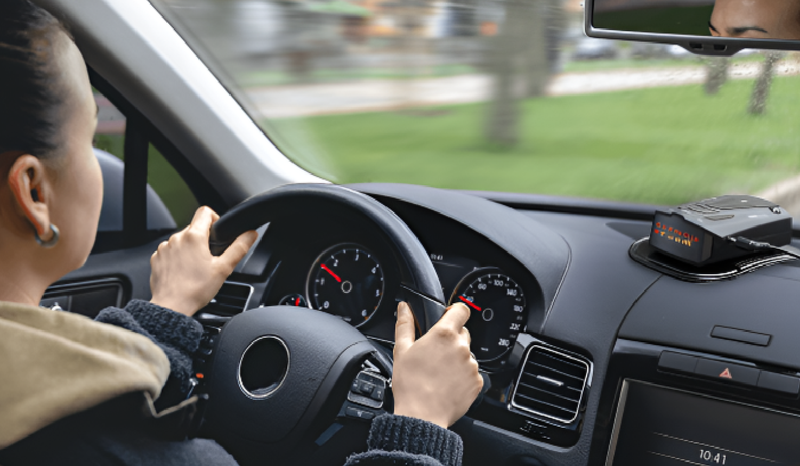
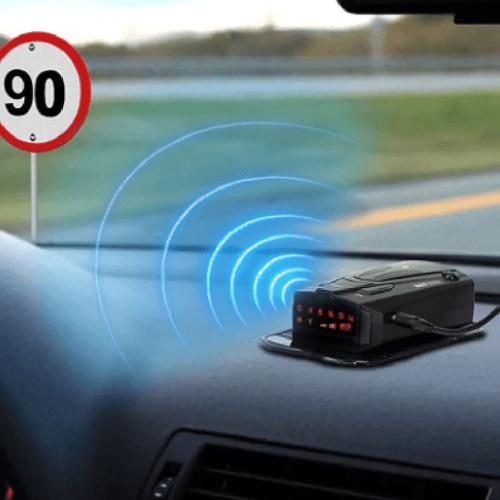

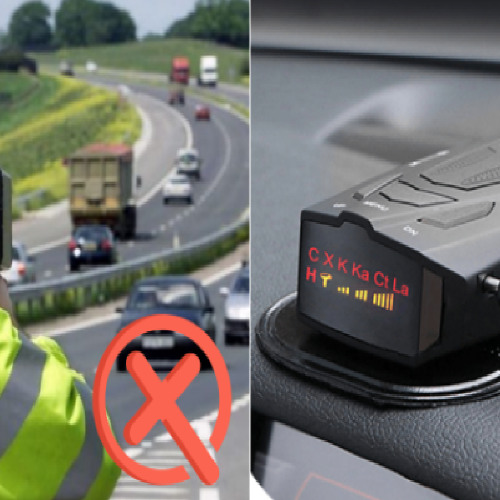






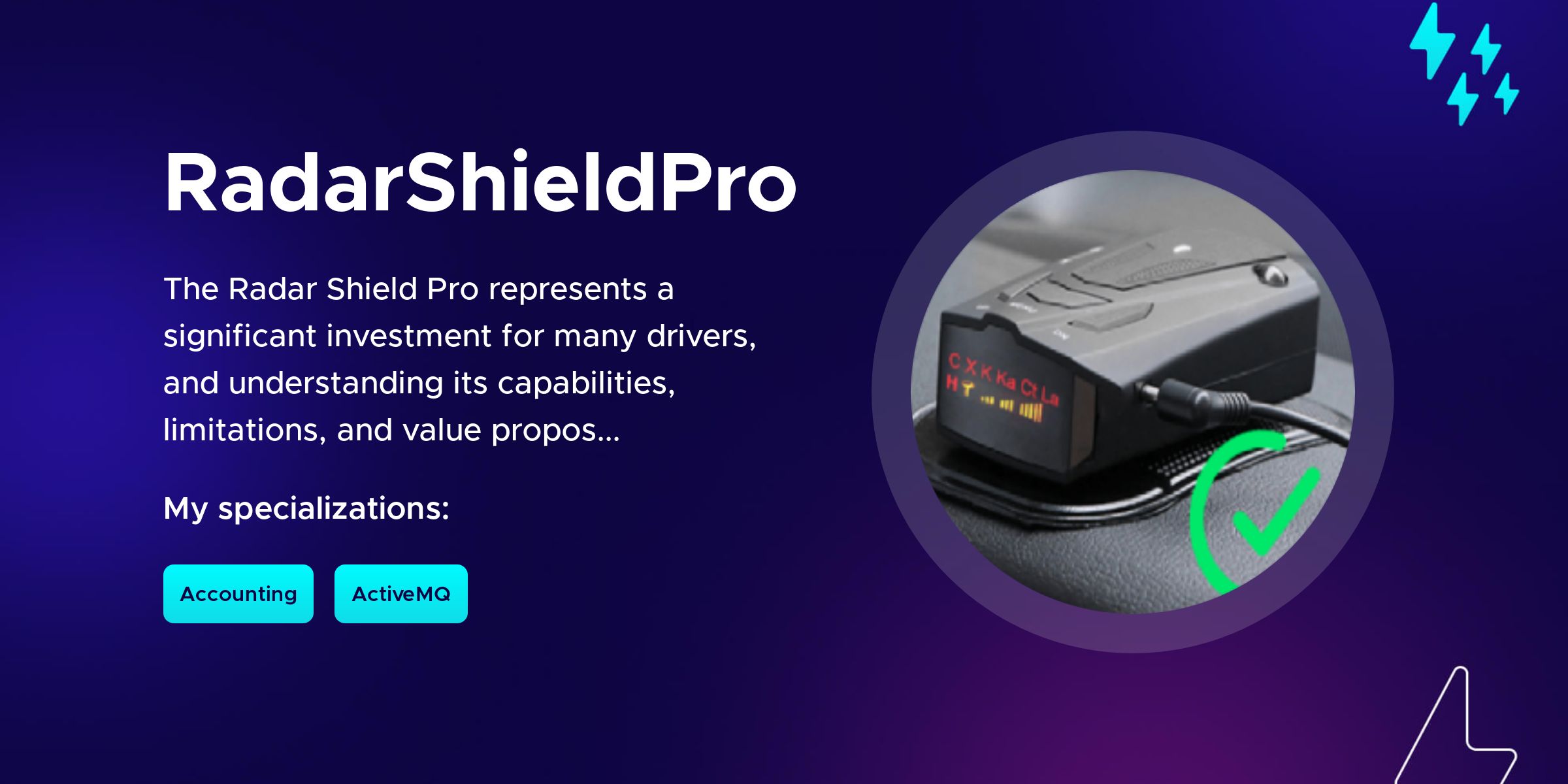
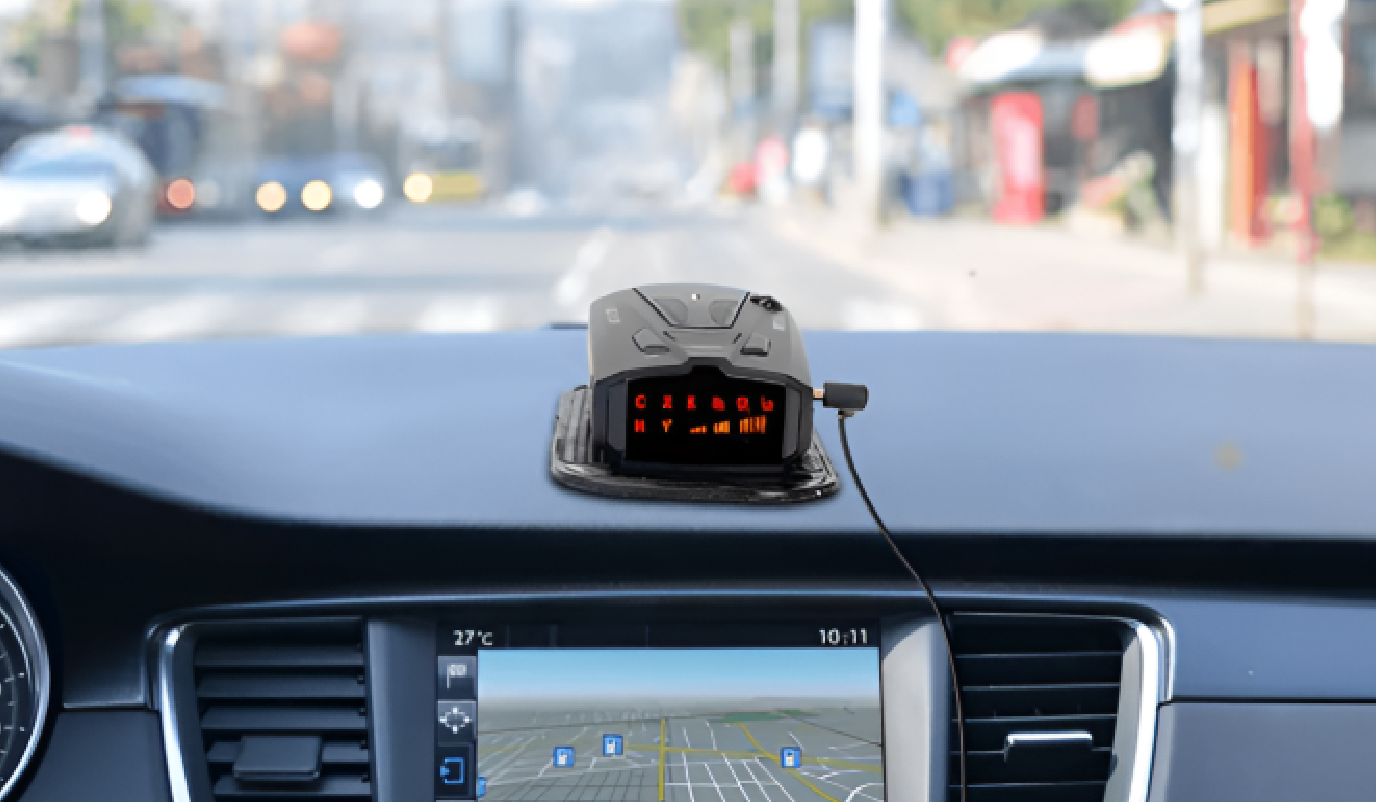
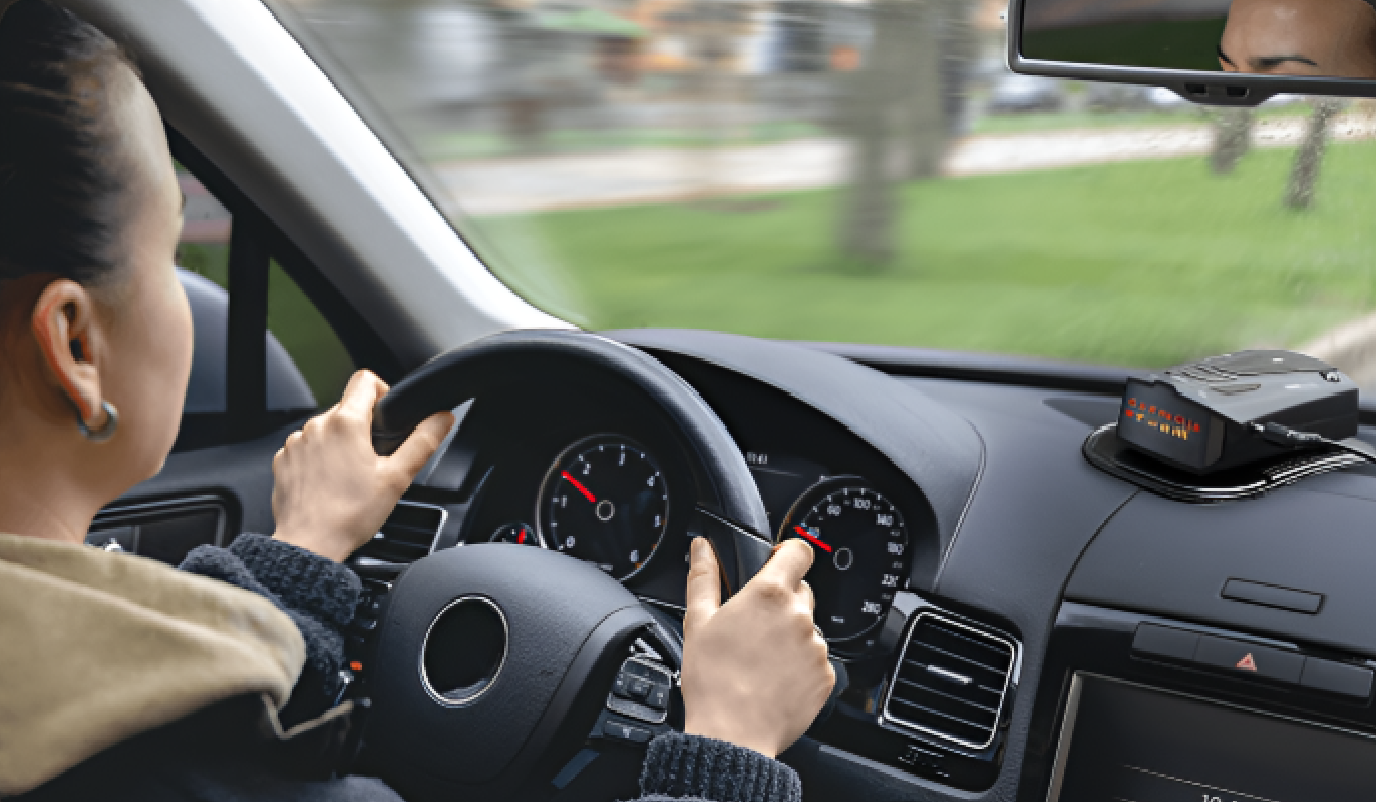
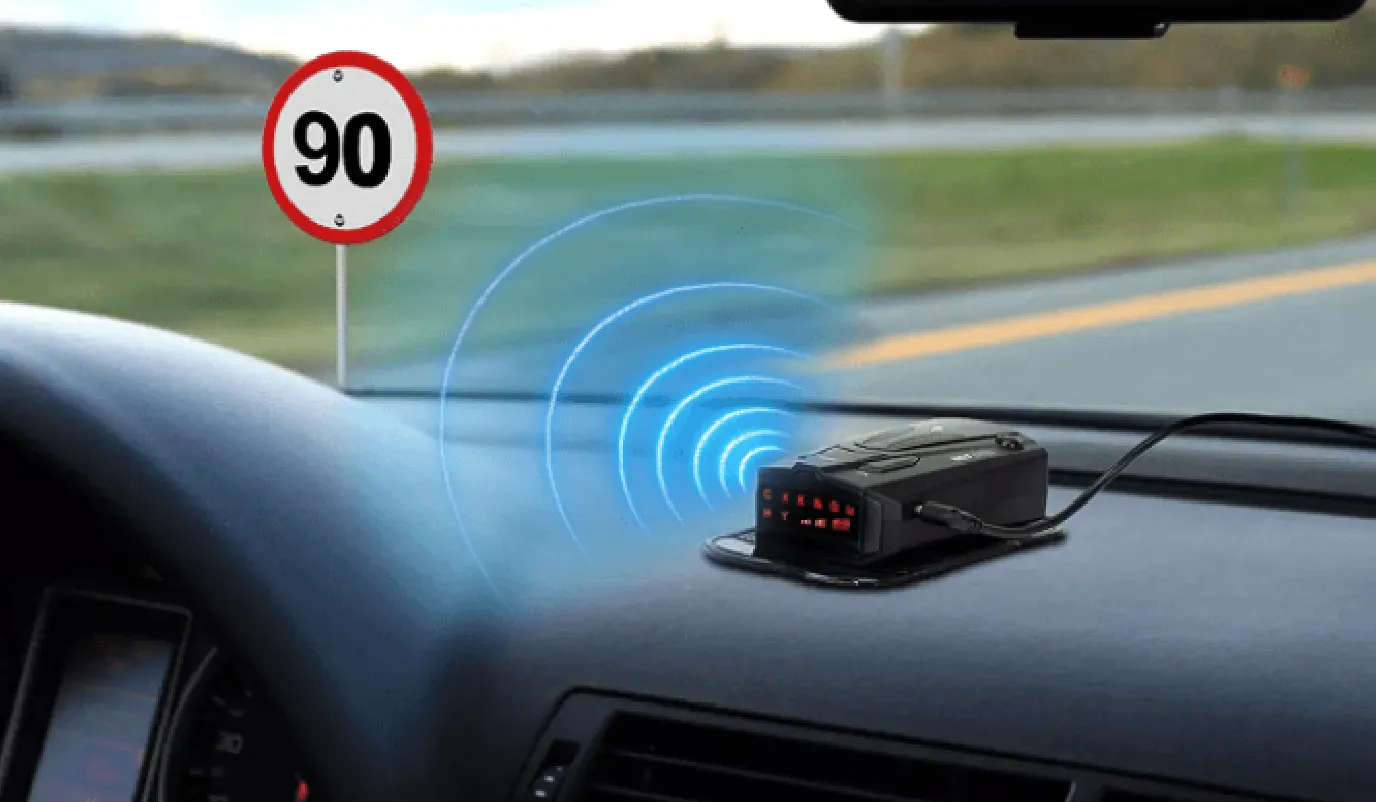
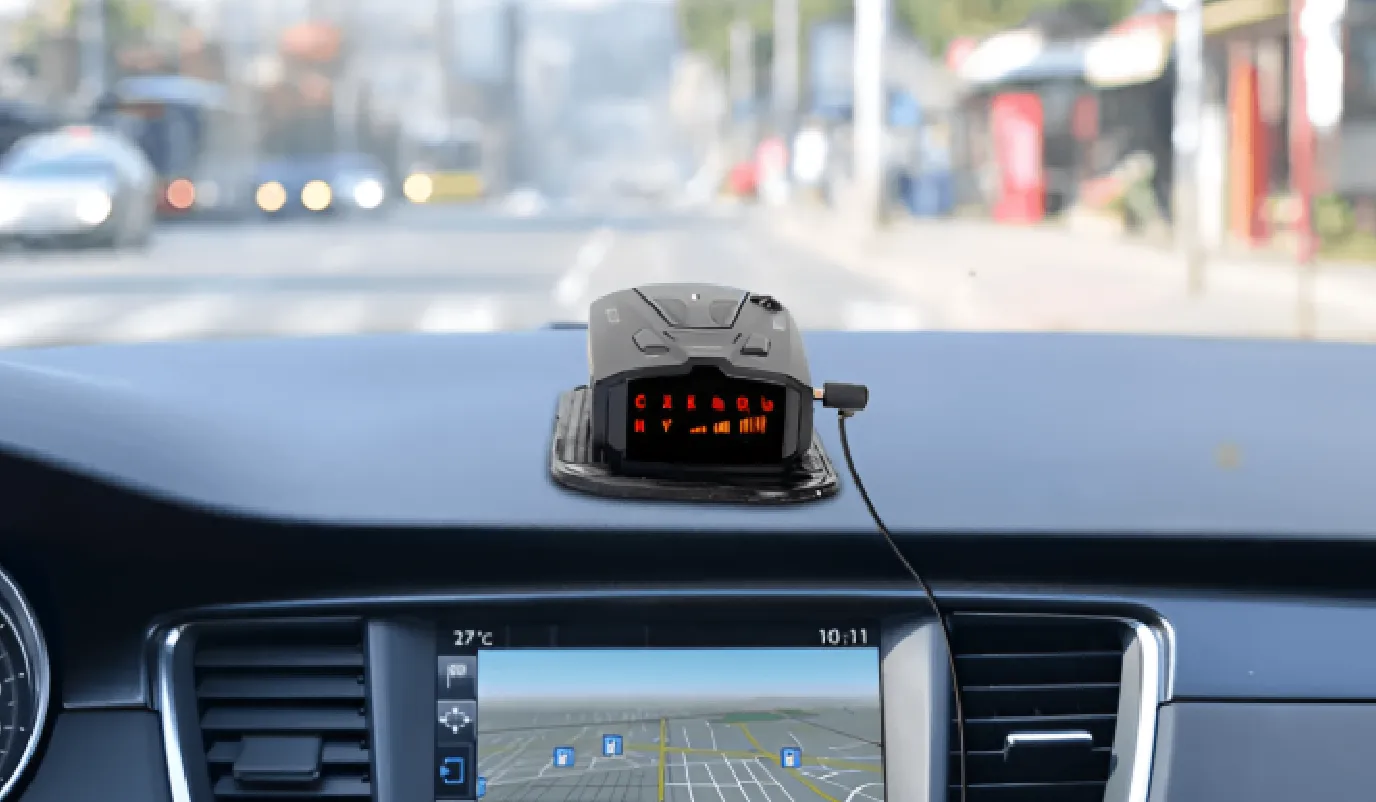
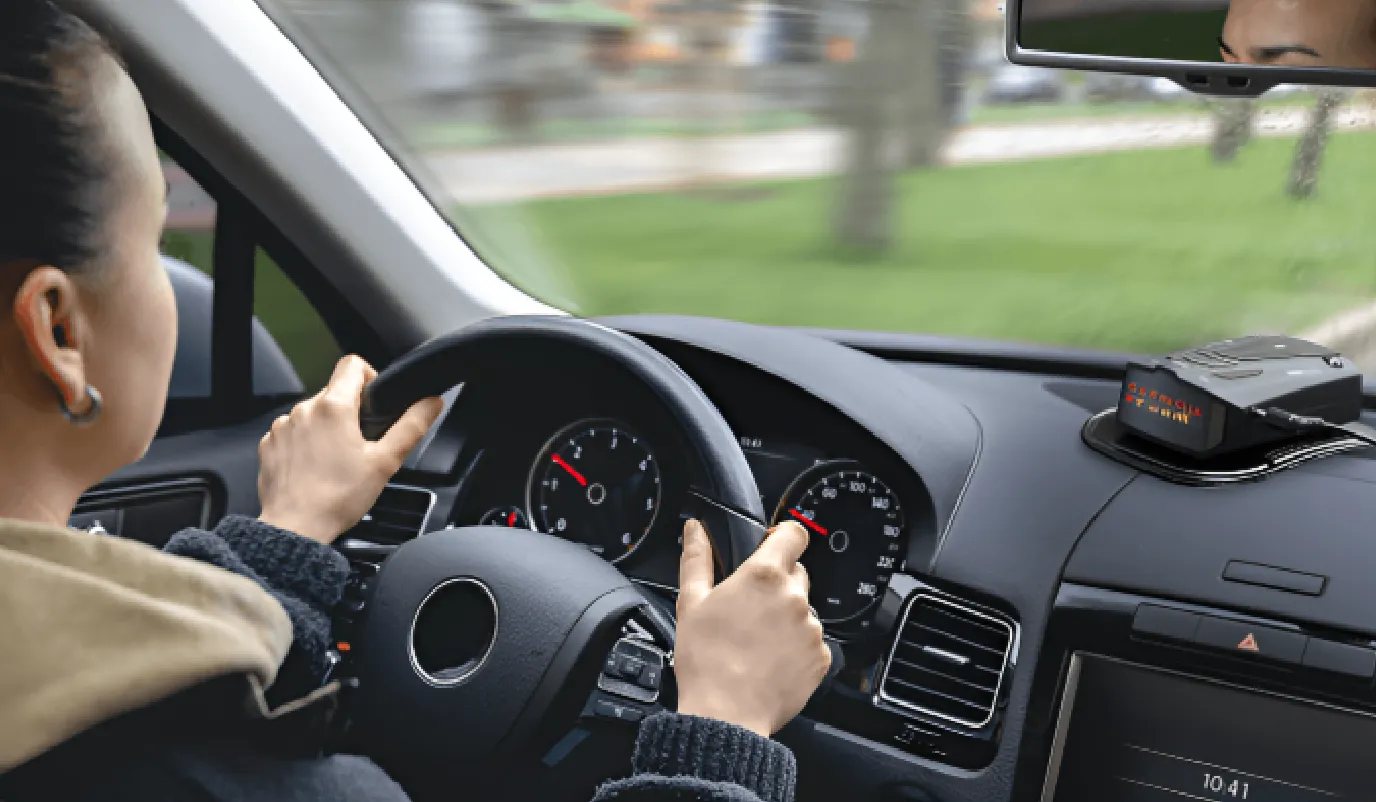
Write a comment ...